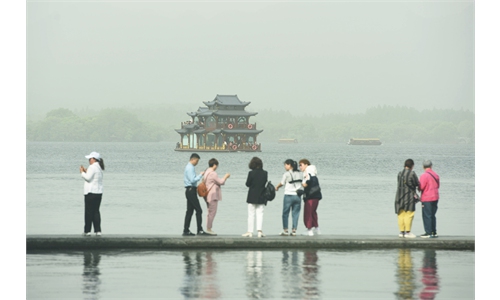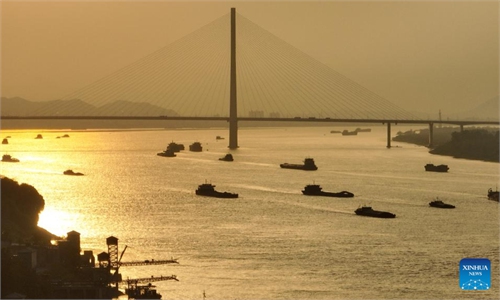ARTS / CULTURE & LEISURE
China unveils 10 national-level tour routes along Yangtze River
Plan to ‘usher in new chapter of eco-friendly tourism’

Photo: Courtesy of the Ministry of Culture and Tourism
China's top culture and tourism authority has released 10 tour routes and travel itineraries that will allow tourists to experience the culture and history of Yangtze River, the longest river in Asia and the third longest in the world, while also ensuring its protection. The new routes were designed with guidance from the Outline of the 14th Five-Year Plan (2021-25) for National Economic and Social Development and the Long-Range Objectives Through the Year 2035, according to China's Ministry of Culture and Tourism.The ministry announced the framework for "10 National Select Yangtze River Tourist Routes," including the "Yangtze River International Golden Tourism Belt," at the 2023 Yangtze River Tourism Overseas Promotion Season held in Yichang, Central China's Hubei Province on Friday, according to a press release from one of the event's organizers, the Network of International Culturalink Entities.
The tourism belt covers 11 provinces and municipalities across China and includes sites closely connected with the origins of Chinese culture, China's red revolutionary heritage, nature and ecology, rural vitalization, intangible cultural heritage and urban recreation.
A total of 38 provincial-level routes along the Yangtze River have been designed and published in the Boutique Route Book of the Yangtze River International Golden Tourism Belt, which contains travel information on route planning, road conditions, notable scenic spots and travel tips.
An overseas tourism promotion activity called Hello China will be held in Paris and Tokyo in May and June. During the campaign, about 600 digital products will be launched globally such as river tourist routes, videos and theme exhibitions.
"It is particularly fitting that this event is being held in Yichang city, the gateway to the Three Gorges, the world's largest hydroelectric dam," said Arthayudh Srisamoot, ambassador of Thailand to China, at the ceremony to unveil the routes. He noted that he is confident that the Yangzte River Selected Tourism Routes will usher in a new chapter of eco-friendly tourism.
"We are certain that our close coordination and partnership will surely contribute to the creation of a more resilient and sustainable society as well as lead to concrete outcomes that will be beneficial to both our communities," he said.
To better preserve the Yangtze River, one of the "mother rivers" of the Chinese nation, the Chinese government has made strenuous efforts over the decades to construct cultural parks, strengthening environmental education and passing specific legislation.
In 2021, a 10-year fishing ban took effect in a pivotal area of the Yangtze River in a bid to restore its biodiversity. The area has seen great improvement and many locals say they have sighted more Yangtze finless porpoises, a barometer of the ecological health of the Yangtze River basin, Xinhua News Agency reported.
In April, four Yangtze finless porpoises were relocated to a stretch of the Yangtze River in Hubei Province for the first time since China started ex-situ conservation of the species 30 years ago, CCTV reported.
Zheng Changling, secretary-general of the China Folk Culture Innovation and Development Center and a research fellow at the Chinese National Academy of Arts, told the Global Times on Sunday that tourism is a very effective means to promote conservation of the Yangtze River, but incorporating the "soul" of the river into the tourism industry is also an important task.
Zheng suggested that in-depth systematic and comprehensive studies of the river's ancient heritage be carried out and that a museum be established to introduce this profound history and culture to visitors.
"We need to demonstrate its contemporary significance to allow people from China and abroad to better understand the importance of protecting the culture of the river and its role in Chinese civilization," he said.




